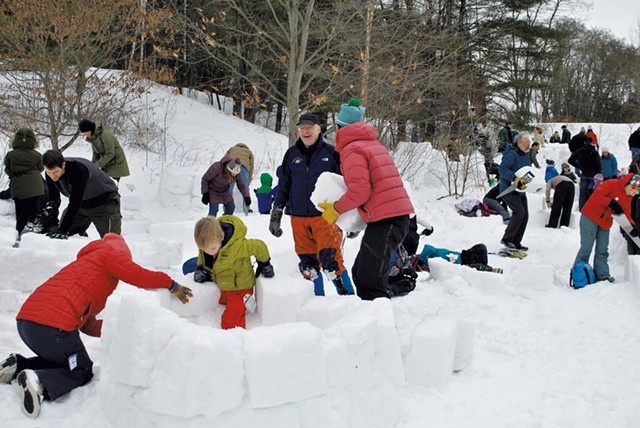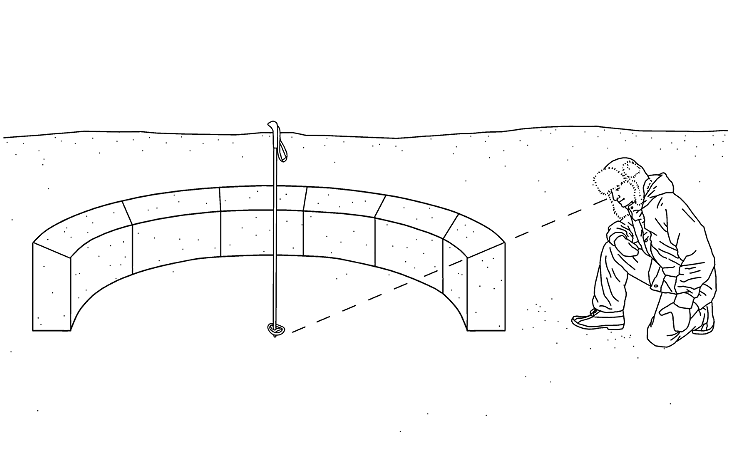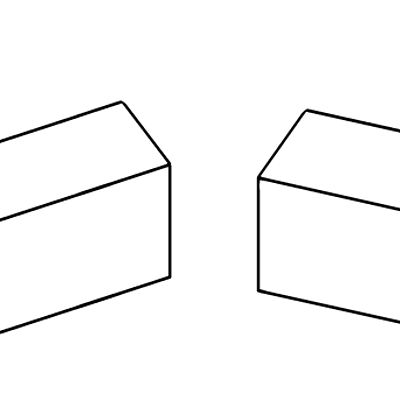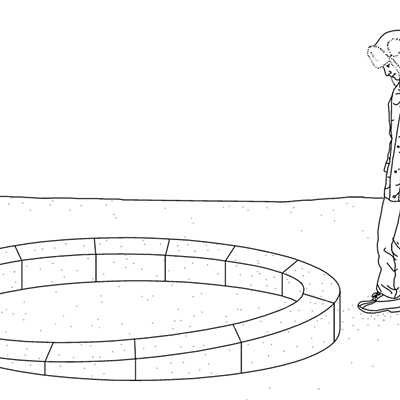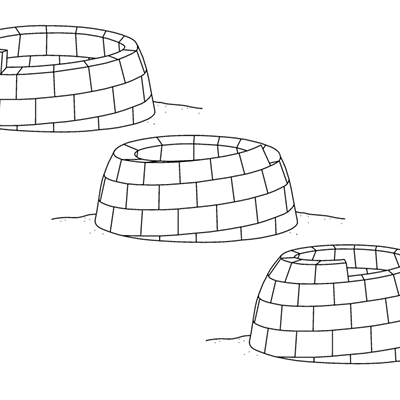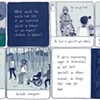Published December 3, 2019 at 10:00 a.m.
"Make friends with winter," Bert Yankielun likes to say. By that, he means dress well and eat enough high-energy foods to stay fueled so you can weather potentially harsh conditions. But Yankielun has made friends with winter in another sense: He truly enjoys its company.
The hundreds of people expected to see him leading his 30th annual igloo building workshop at Norwich's Montshire Museum of Science in February will undoubtedly feel his enthusiasm. This is a guy who has spent Thanksgivings in Antarctica; Christmas and New Year's on the Ross Ice Shelf, the world's largest body of floating ice; and Easter in Deadhorse, Alaska, "with no Easter flowers," he notes, at 20 degrees below zero.
The retired research engineer for the U.S. Army Corps of Engineers' Cold Regions Research and Engineering Laboratory in Hanover, N.H., speaks of "the seductive allure and majesty of places Polar" and an intense longing to return. He still works as an engineering consultant.
Yankielun — his name is pronounced YANK-lin — lives on Deer Isle, Maine. When he begins his workshop at Montshire, he often scans the crowd for a child about 5 years old and asks the child if he or she can make a snow angel. "You always get an affirmative nod," he said. The child makes the snow angel, and "that's the inside of the diameter of the igloo that we build."
He gives instructions, then participants form teams and start construction. The 2019 event drew more than 1,200 people who built 25 igloos. Yankielun is now getting third-generation participants. Kids who come back year after year know his corny jokes. What do you use to stick those igloo blocks together? "I'll ask the question," he said, "and, invariably, there'll be a couple of kids there who remember it from the prior year and shout it out." Igloo glue!
Detailed, illustrated instructions for building igloos, quinzees, slab shelters and more can be found in Yankielun's 2007 book, How to Build an Igloo and Other Snow Shelters. For those looking for an introductory snow construction project, he suggests building a snow wall using a five-gallon bucket as a mold. Pack snow in the bucket using the end of a 2-by-4 "like a potato masher," then rap the sides and bottom of the bucket to pop out the snow. "They're bricks," he said, "so you build a brick wall."
An igloo requires at least six inches of snow — the kind that stays intact when shaped into a ball — and, ideally, a day that stays below freezing, Yankielun said. "For the price of nothing more than a snow shovel and a rusty flea market carpenter saw, you have an all-day family activity."
"Igloo Build and the Science of Winter" is scheduled for Feb. 15, 10:30 a.m. to 2 p.m. at the Montshire Museum of Science in Norwich. Free with museum admission. Learn more about Yankielun and his work at doctorwhy.com.
- Start a day or two in advance by assembling your "quarry." Appropriate igloo snow is cold, dry, wind-packed and has not repeatedly thawed and refrozen. It rarely occurs naturally in Vermont, so you have to make it. Shovel snow into a 10-foot-square "sheet cake" that's 18 to 24 inches high, stamping it down with snowshoes as you go to help it solidify.
- Use a carpenter saw — not Mom or Dad's fine woodworking saw; it will ruin it for woodworking! — to cut the biggest blocks you can carry, about 12 inches by 24 inches.
- Lay them in a circle.
- Miter the blocks — cut the ends at matching angles — so they fit tightly together.
- Use the saw to cut away portions of the blocks to make a ramp that runs at least halfway around the circle.
- Shape the tops of the blocks so that they angle slightly toward the inside of the igloo, which will enable you to build a dome and not a tube. To ensure the proper angle, stick a ski pole in the center of the circle, tie a cord to its base and, if the angle is correct, the cord will form a straight line when stretched over the slope of a block.
- Stack more blocks of the same size on top of the ramp, starting at the point where the full-height block meets the shortest block. Each block should bridge the vertical seam between the two blocks below it. Cut the top of these and all subsequent blocks to angle inward.
- Before the wall gets too high, have a helper stand inside — preferably an adult — to assist construction. He or she should use a saw to help shape blocks and stay inside until the igloo is completed.
- Continue stacking and shaping blocks in an upward, inward, circular spiral until a small opening — a bit smaller than the size of one block — remains at the top.
- Cut and place the cap block or "king" block. This block is like a cork that plugs the hole at the top and supports the inward-leaning walls. Taper its sides to match the taper of the hole.
- Cut an arch-shaped door, not much bigger than 2 feet by 2 feet and centered beneath a block rather than directly beneath a seam.
- Cut a fist-sized ventilation hole near the top of the igloo dome.
Dr. Yankielun's Safety Rules
- Children should always be supervised in and near an igloo.
- Enjoy hot chocolate inside, but don't bring in any camping stoves, candles or other flames. These can cause injury, and igloos can trap carbon monoxide.
- Do not spend the night in the igloo. Most people don't have the proper cold-weather gear.
- At the end of the day, knock it down so as not to create an "attractive nuisance" where other kids may get hurt. This destruction may be more fun than construction, Yankielun said. At his igloo workshops, he said, "Boy oh boy, some of the kids come for that, I think, as opposed to the buildup."
This article was originally published in Seven Days' monthly parenting magazine, Kids VT.
More By This Author
Speaking of...
-

Best museum
Aug 2, 2023 -

Best Vermont day trip with the kids
Aug 2, 2023 -

Best museum
Aug 3, 2022 -

Best Vermont day trip with the kids
Aug 3, 2022 -

Best indoor children's play space
Aug 3, 2022 - More »
Comments
Comments are closed.
From 2014-2020, Seven Days allowed readers to comment on all stories posted on our website. While we've appreciated the suggestions and insights, right now Seven Days is prioritizing our core mission — producing high-quality, responsible local journalism — over moderating online debates between readers.
To criticize, correct or praise our reporting, please send us a letter to the editor or send us a tip. We’ll check it out and report the results.
Online comments may return when we have better tech tools for managing them. Thanks for reading.




































